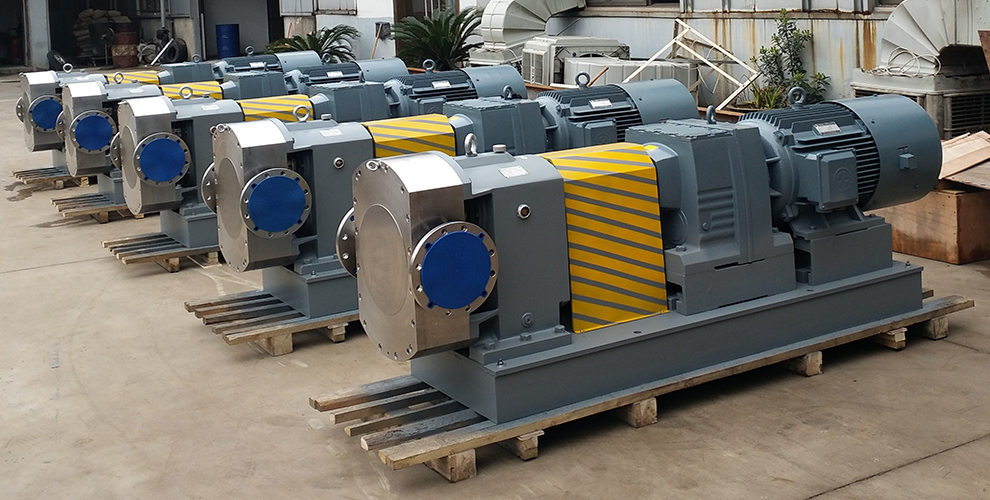There are five unit operations for chemical treatment. This article will focus on the fluid motion process, which is the most common transfer, filtration, solid fluidization and transportation. For reference, the other four unit operations are heat transfer (evaporation and heat exchange), mass transfer (distillation, extraction, adsorption and drying), thermodynamics (refrigeration and gas liquefaction) and mechanical (crushing, crushing, sieving and sieving) .
For many years, centrifugal pumps have become the most commonly used pumping technology for fluid delivery in chemical processing. And meet the requirements of large flow delivery conditions in industrial processes. Centrifugal pumps are also suitable for use in pipelines to deliver low-concentration liquids with variable flow rates.
However, this article will explain how different types of pumping technology – Positive displacement rotary lobe pumps – are more reliable, efficient and economical than centrifugal pumps in critical fluid handling operations in the chemical processing industry, especially when dealing with high abrasive, corrosive And hazardous media.
CHALLENGE
The biggest challenge of rotary lobe pumps in chemical processes is the deep-rooted conception of industry practitioners that centrifugal pumps are the only choice for fluid delivery solutions.
In many cases, chemical processing systems are designed around pumping technology, not the other way around.
This means that engineers are first familiar with centrifugal pumps and try to work within their operational limits. They know how centrifugal pumps work, understand their advantages, and make sure that centrifugal pumps are their best choice.
Based on this way of thinking, designers will design systems that mix or heat chemical materials or compounds and reduce the viscosity of the fluid to less than 300 cSt for easier transport by centrifugal pumps. In this case, what they are doing is re-adjusting the fluid to the pumping requirements - regardless of cost impact.
Although the fluid can be reconditioned to meet the operational needs of the centrifugal pump, the operator must still ensure that the centrifugal pump operates at or near its optimum efficiency point. In practice, centrifugal pumps rarely operate at their optimum efficiency points because raw pumping conditions are rarely found. With this in mind, it is most efficient if a centrifugal pump can operate from 80% to 110% of the highest efficiency point.
However, when the operation of the pump moves too far to either side of the optimum efficiency point, uneven pressure will be applied to the impeller, which will result in an increase in radial thrust, causing the shaft to bend. When the shaft is bent, the bearing and mechanical seal create a high load, which can damage the pump's outer casing, rear plate and impeller.
In addition, meeting productivity and quotas has been the number one requirement in chemical processing operations, but as operating costs continue to increase, operational efficiency need to be increased to optimize the energy consumed during pumping operations.
Centrifugal pumps also have disadvantages in the following respects:
• Pumps that are oversized are often chosen as a means of reducing pump selection complexity, which can result in increased operating and maintenance costs, inefficiencies and high energy consumption.
• During centrifugal pump operation, as the differential pressure increases, the flow rate decreases. As a result, the timeliness of operations can be lengthened by maintaining a constant flow rate, resulting in high costs.
• When pumping fluids with viscosity greater than 100 cSt, the performance of the centrifugal pump can be adversely affected.
Ultimately, these inefficiencies will result in higher utility bills and potentially lower productivity, which will undoubtedly have a negative impact on the bottom line of the chemical processing business.
SOLUTION
The unique design of the Rotary lobe pumps allows them to handle a wide range of liquids, even those with higher viscosity. The following advantages are demonstrated in chemical processing fluid delivery applications:
• High volume and overall operational efficiency to reduce operating costs
• Controllable output or capacity with adjustable speed ratio
• Low speed operation
• Low mechanical vibration and long service life
• Inherently smooth operation
• Very low pulsation reduces stress and extends the life of related fluid transfer components (pipes, hoses, seals, bearings, etc.)
• Delivery efficiency increases as the viscosity of the fluid increases.
• Suitable for all types of media applications, including low viscosity or high viscosity, lubricated or non-lubricated, neutral or aggressive, and clean or contaminated fluids.
CONCLUSION
In a chemical process, no unit operation is more important than the other, but if the manufacturer wants to optimize the performance of its fluid delivery application, then the benefits of considering the Rotary lobe pump are obvious.
Although the purchase price of the Rotary lobe pump may be higher than that of the centrifugal pump, as the saying goes: "Get early and enjoy it early."
In addition to cost, the main operational advantages of the Rotary lobe pump include the ability to handle a wider range of fluids at higher speeds and pressures, and low energy consumption without the need to dial BEP. These advantages make them more efficient, reliable and versatile.










